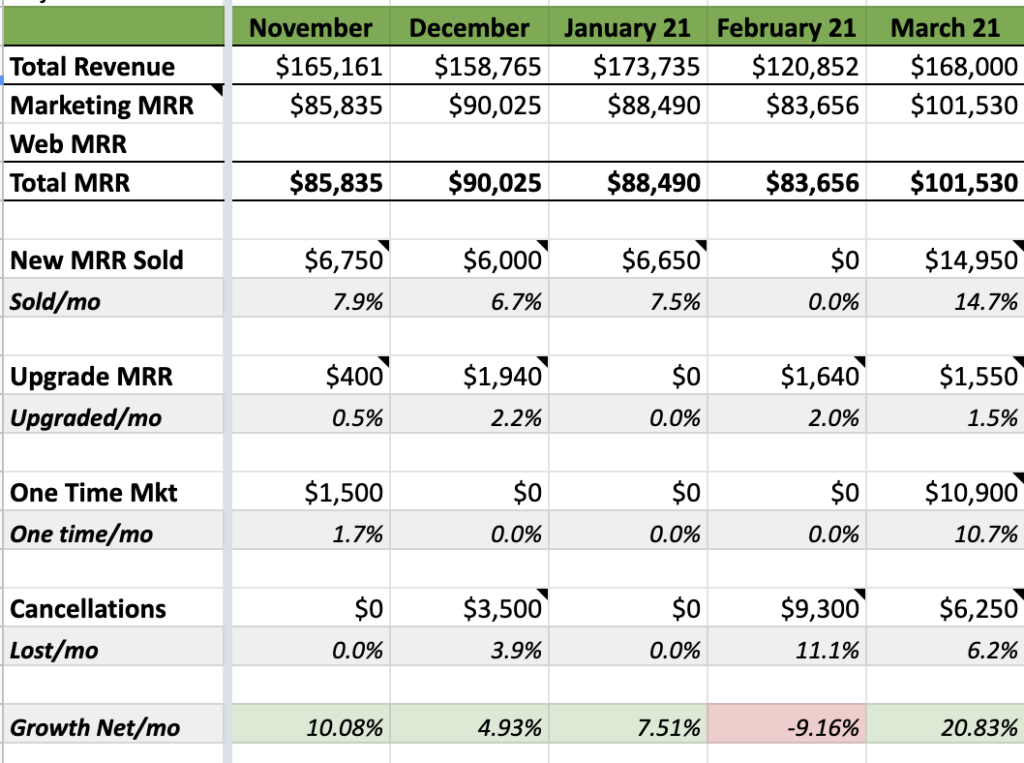Small businesses can be fragile. Especially when you’re growing and stretching resources – your cash and team always feel insufficient.
Remember that scene in Apollo 13 when they have to build a life saving device with a pile of junk and a roll of duct tape?? It’s exactly like that.

Most small businesses are held together with some duct tape and a dream. Some of them still manage to take flight. And it’s beautiful.
So why are they fragile? Low cash reserves, slow feedback loops, tired operators.
Too many owners really only look at their numbers around tax time. Or they have bad bookkeeping that’s months behind and inaccurate. And even if their books are solid, that’s still a 30-60 day LAGGING indicator.
But a few months of bad margin, slow production, or poor cash flow can put you in a world of hurt.
LEADING indicators to the rescue! Frameworks such as Traction/EOS, Four Disciplines of Execution, OKRs, etc all emphasize the importance.
Here’s a few examples of dashboards I’ve created with clients (names and data changed for confidentiality):




And if you have sales reps, you definitely want to track activity with leading indicators such as new contacts, proposals sent, etc:

How I like build scorecards clients:
- Brainstorm a list of 8-10 LEADING indicators to measure
- Narrow it down to 3-5. Less is more when you start.
- Ask yourself – Is it a leading indicator? Is this something we can impact on a weekly basis? Will it quickly tell us the health of the business?
- I’m a fan of manually entering data weekly versus an automated dashboard – it’ll force you to slow down and look at it
- Don’t be afraid to edit and change categories after a month
- Categories can includes sales pipeline, cash on hand, available capacity, monthly recurring revenue, proposals sent, new reviews, recruiting interviews, etc
- If you have a large team, you can create separate scorecards for specific departments.
- $0-2M revenue businesses should look at 1-2 week periods, $2-5M can look at 30 day periods
This will take 2-3 months to build the muscle and work. But you will see around corners better, you’ll become proactive, your meetings will be more efficient, and people will be held accountable.

